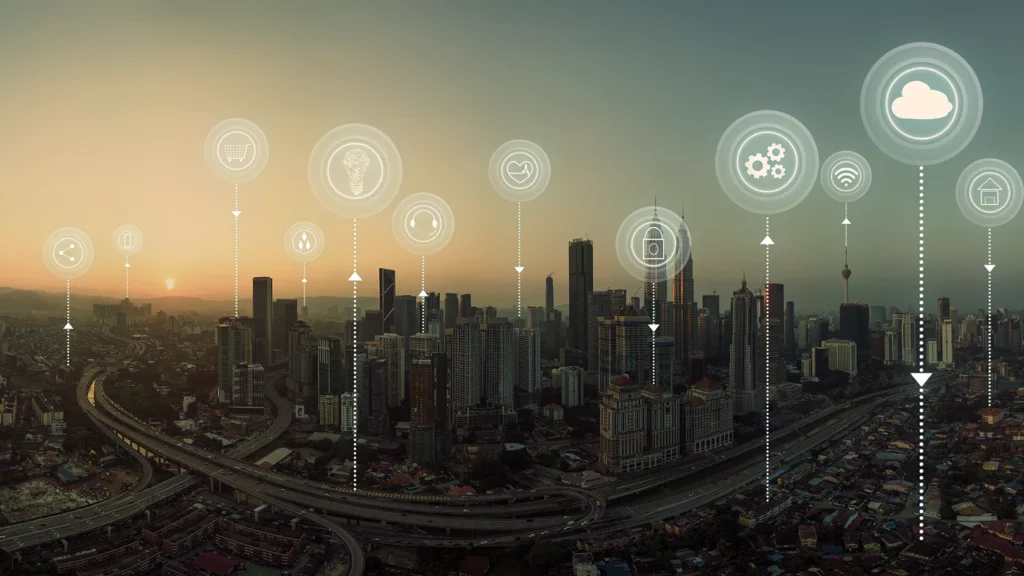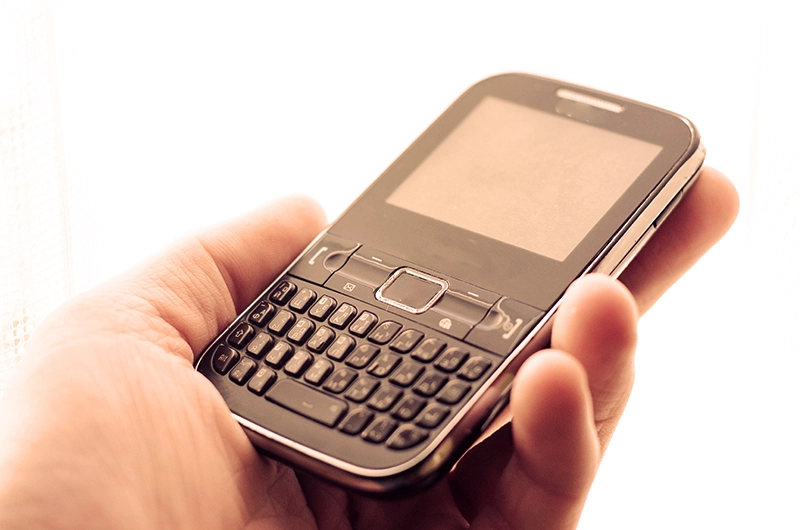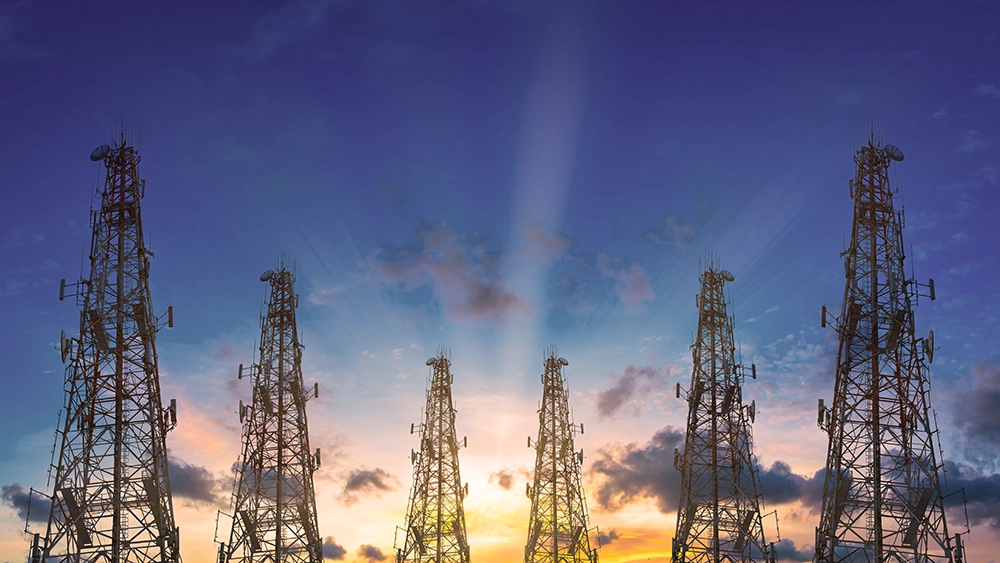Did you know there are cellular networks specifically designed for M2M and IoT devices? As more wireless devices are connected to the Internet major carriers are providing cost-effective wireless connectivity solutions for businesses. The reason for this is a good amount of IoT devices do not consume large amounts of data. These low bandwidth networks are called Low-Power Wide-Area Networks (LPWAN) and are increasingly becoming one of the best options for IoT deployments using low-power devices.
There are various methods to deploy low-power networks, and each low-power solution has unique attributes that tailor towards different use cases. Cellular LPWAN technology is commonly used because of its reliability, readily available infrastructure, and cost-efficiency.
Other LPWAN solutions include technologies such as Bluetooth and LoRaWAN, but these do come with some disadvantages. They can require extensive implementations and utilize unlicensed spectrums. Here is more information about non-cellular and unlicensed spectrum LPWAN networks. Although uses are growing with these non-cellular technologies the best LPWAN solution will depend on the requirements of the application. The IoT device specifications and your entire deployment layout are just a few examples of what will determine the ideal solution.
In this Article
- Cellular LPWAN Attributes
- Cellular LPWA Network Solutions
- LPWAN Security
- Cellular LPWAN Use Cases
- Is cellular LPWAN the right solution?
Cellular LPWAN Attributes
When applicable, low-power wide area networks have great advantages over traditional 4G/LTE and Wi-Fi networks. The LPWAN networks are designed for low-bandwidth IoT devices such as sensors and GPS tracking units. These devices are typically powered by battery and transmit intermittent data over long distances.
Long Battery Life
The low-bandwidth technology used to transmit data is what helps extend the battery life of these IoT devices. Low-power cellular technology consumes such little power allowing some devices to last over 10 years on a single battery charge. Going years without recharging or changing out batteries can help significantly reduce maintenance costs. This also makes it possible to install devices in hard-to-reach areas that are more difficult to service, such as underground. More data points like these can result in collecting data that otherwise wouldn’t be available for some applications.
Built on an Existing Network
Low-power cellular connectivity uses the same infrastructure as the existing mobile 4G/LTE networks provided by major carriers. This can significantly reduce implementation and maintenance costs as gateways and other equipment is not needed. Using existing wireless networks will also ensure wide coverage and reliable connectivity in areas that are most needed for IoT deployments.
Long Range
Low-power wireless technologies can have long-range capabilities from a few kilometers to over 15 kilometers. This is one of the furthest reaching wireless WAN solutions. Therefore, it is an ideal connectivity option when deploying sensors and other IoT devices in rural locations such as agriculture and oil fields, as well as large warehouses.
Core Features of Cellular LPWAN IoT Connectivity
- Long battery life (>10years)
- Low power
- Low cost
- Industry standard with major carriers
- Existing infrastructure
- Long range (Up to 15 km)
Cellular LPWA Network Solutions
When referring to major mobile operators that provide wireless networks there are two leading low-power wide-area technologies offered. These cellular networks are known as LTE-M and NB-IoT. Both wireless technologies are developed by the standards organizations, 3rd Generation Partnership Project, 3GPP. The LPWAN technology standard was published by 3GPP in the Release 13 specification. Since its launch in June 2016 the technology has quickly become the connectivity standard for battery operated IoT devices. These networks also coexist with mobile networks like 2G, 3G, and 4G, and supports similar security and privacy capabilities.
NB-IoT
Narrowband Internet of Things (NB-IoT) is a long-range solution that supports longer battery life for stationary IoT devices requiring very low data transmission. NB-IoT technology uses the buffers of larger use channels outside the LTE spectrums and limits the bandwidth to a single narrow-band of 200kHz. This allows there to be a long-term solution that works along with LTE technology, assuring it will be around for years to come.
With NB-IoT the expected battery life can be more than 10 years with a wide range of use cases. It also has excellent penetration making it possible to reach more remote locations such as underground and inside buildings.
LTE-M
LTE-M, or Category-M1 (Cat-M1), focuses on providing a robust long-range solution that can handle bigger data requirements and some voice capabilities. It transmits between a bandwidth of 1.4MHz making it compatible with the existing LTE network. This is good news for carriers as they do not have to spend the money and install new antennas. LTE-M provides speeds of up to 1Mbps for uses that require slightly greater data rates than NB-IoT allows.
LPWAN Security
LTE-M and NB-IoT have LTE grade security since cellular providers already have existing security measures in place. This includes user and device identity authentication, credentialing, and encryption tools.
One major security benefit of cellular low-power wide-area connectivity is that it operates under licensed spectrum. Licensed spectrums are only issued by national regulators which keeps interference from other technologies at bay. It also dedicates the spectrums to be used only by the license owner, therefore unauthorized use is subject to prosecution.
Another layer of security accompanied with low-power cellular networks is they require IoT SIM cards. This ensures authentication for each device accessing these networks. Today SIM cards typically do not hold personal data on them but stores digital certificates and other security credentials. These credentials can help encrypt sensitive data traveling between wireless devices and an IoT management platform. Mobile operators can also use this information to authenticate an IoT device.

Cellular LPWAN Use Cases
LPWA networks can fit in a variety of vertical use cases. Although the best LPWAN connectivity solution will depend on the data usage required by the device. High bandwidth may be required for IoT gateways and live surveillance. Other use cases such as asset tracking and leak detection sensors may check in only a few times an hour requiring significantly less data transfer. If your application requires more bandwidth, then a 4G/LTE or 5G solution may be the better option. However, if bandwidth is low and the unit is stationary, a LPWAN Cat-M1 or NB-IoT network would be the more cost-effective solution.
Examples of NB-IoT Use Cases
- Gas metering
- Alarms and event detectors
- Parking monitoring
- Smoke and fire alarms
- Environmental monitoring
- Smart bins
- Water metering
- Liquid and pressurized fuels
Examples of LTE-M Use Cases
- Smart watches
- Medical wearables such as pulse or glucose monitors
- Warehouse wearables for assembly lines
- GPS asset trackers
- Fleet monitoring
Is cellular LPWAN the right solution?
The ideal LPWAN solution all depends on your device requirements and IoT deployment. If you have multiple battery-operated wireless devices spread over acres of land, cities, states, or even globally, then NB-IoT or Cat-M1 may be a good solution. If you have multiple or even thousands of devices within one warehouse or within a mile radius, you may want to consider more private LPWAN solutions such as LoRaWAN. Additionally, if your devices are mission critical and consume large amounts of data then an LTE or Private LTE solution may be a better fit.
In many cases your deployment may include high and low bit rate devices. It is possible to integrate both forms of wireless connectivity and in this case a full IoT solution provider, like Datablaze, would be recommended. The provider can help scope out the best solutions for your IoT deployment, manage the implementation of the networks and continue to support them for best performance. You will also have access to a connectivity management platform to manage all your device connections in one dashboard regardless of the method of connectivity.
Although cellular LPWAN solutions are quickly growing it is important to note that not all carriers are supporting this technology in every country. Countries such as the United States and Australia are supporting both LTE-M and NB-IoT. Other countries such as Mexico, China and India are only supporting NB-IoT networks. See this Mobile IoT Deployment Map to view which countries are deploying IoT cellular connectivity. Keep this in mind when planning your next low-power IoT deployment.



